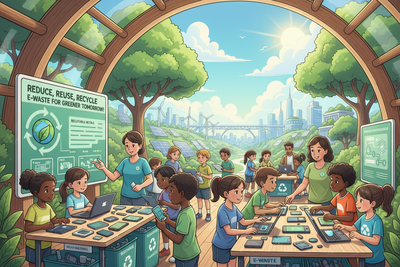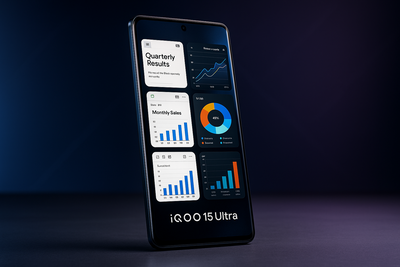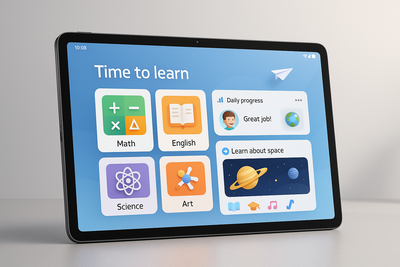Introduction
In this rapidly evolving world, sustainable waste education has emerged as one of the most important pillars for safeguarding our world. Waste production continues to increase, and awareness among future generations is more important than ever. Educating young people about sustainable waste practices not only decreases environmental harm but also promotes good habits that are adopted by families and communities. This type of education teaches recycling, reducing consumption, and smarter reusing. Through well-understood awareness, the future generation can shape a cleaner, healthier, and more sustainable world for everyone.
Knowledge of Sustainable Waste Education
Sustainable waste education is the process of educating people — particularly students — on how to handle waste correctly and effectively. It is about creating long-term practices that reduce waste generation and enhance the reuse of resources. Sustainable waste education is not just lectures delivered in the classroom; it encompasses civic work, school assignments, and community awareness activities.
As soon as kids learn about how waste impacts land, water, and air, they begin to realize the larger picture. They know that every single little thing, such as using a reusable bottle or sorting out the recyclables, makes a world a greener place. By instilling the value of reduce, reuse, and recycle, schools and neighborhoods produce environmentally aware citizens.
Additionally, sustainable waste education fosters nature empathy. Students learn how the handling of waste is directly related to global warming, depletion of natural resources, and pollution. When they understand that their actions have direct environmental implications, they tend to be more inclined towards adopting sustainable lifestyles.
The Role of Schools and Institutions
Schools have a key role in instilling waste consciousness in young students. By incorporating sustainability in their curriculum, schools can make children responsible for themselves and impact their peers and families as well. For example, incorporating on-the-spot lessons on segregating waste or composting makes pupils realize waste cycles more effectively.
Numerous schools have implemented environmentally friendly projects like zero-waste classrooms, recycling campaigns, and waste audit systems. Such actions bring abstract concepts to concrete reality. Students learn about the amount of waste they produce every day and how tiny adjustments can impact greatly.
Also, colleges and universities may partner with environmental agencies to hold seminars, clean-up activities, and recycling competitions. These experiential learning activities not only make sustainability engaging but also inspire students to set an example. As people learn, awareness increases — and where there is awareness, action follows.
Community Participation in Waste Awareness
Although learning starts with school, the community at large is responsible for reinforcing sustainable waste practices. Local authorities, NGOs, and environmental organizations can organize awareness campaigns, workshops, and public garbage collection drives to reach the residents. These help to reinforce the bond between learning and actual effect.
Community waste programs promote residents to sort out biodegradable and non-biodegradable trash from their homes. They also educate individuals regarding the proper methods of disposal, including composting organic waste and recycling plastics or metals. Through focusing on shared responsibility, communities reduce landfill garbage as well as pollution.
Additionally, when kids observe adults willingly engaging in sustainable behavior, it reiterates what they get to learn from school. A kid who observes their parents sorting waste or reusing items is likely to carry on that behavior even as an adult. Therefore, sustainable waste education is successful if schools and communities collaborate hand in hand.
Technology and Innovation in Sustainable Waste Education
New technology presents great prospects for enhancing waste education and making it more appealing to new generations. Engaging apps, virtual reality (VR) experiences, and online learning platforms can mimic actual waste management situations. For example, students can learn about the workings of recycling plants or see plastic waste life cycles through digital narratives.
Most educational programs incorporate environmental games, recycling simulations, and computer-based quizzes to educate children on how to recognize, sort, and deal with waste. All these make learning both entertaining and hands-on.
In addition, technology assists in monitoring and minimizing waste at school and in the community. Intelligent waste cans that recognize recyclable materials or sensors that calculate waste quantities can be utilized to educate data-informed waste management. Not only do these technologies update waste education, but also equip the next generation for a technology-driven green future.
Global Perspective: Learning from Sustainability Leaders
Other nations across the globe are embracing innovative methods of promoting waste education in a sustainable manner. For instance, Some country have led the way by incorporating lessons on recycling into primary education. Young children are taught to dispose of and sort out waste from childhood, which becomes second nature to them. Sweden's Recycling Revolution program educates students on how waste is used as energy, raising awareness about circular economies.
Likewise, the UAE has significantly improved in the promotion of waste awareness via national campaigns and smart recycling schemes. In the UAE, schools are implementing sustainability modules that educate students about the importance of conserving natural resources. Such worldwide efforts show that education on sustainability is capable of driving long-term cultural transformation.
Learning from such model successes is what can assist other nations, particularly developing nations, in establishing good waste management programs. Adopting best practices from around the world and incorporating them into national needs is what can reinforce societies' environmental backbone and make sustainable waste education a lifetime habit.
The Impact on Future Generations
The end result of sustainable waste learning is to make the future cleaner and greener for future generations. When young minds are taught with an understanding of sustainability, they become better adults who look after their surroundings. They tend to select green products, minimize wastage, and affect others as well.
Future generations will also have a major say in developing smart waste management solutions. By learning about sustainability at an early stage, they can help devise smarter systems — including waste-to-energy technology and circular economies — that lower environmental footprints.
The long-term payback is huge: decreased pollution, healthier habitats, and more mindful consumption habits. Sustainable waste education sows the seeds of accountability, guaranteeing today's actions bring about a sustainable tomorrow.
Challenges in Implementing Sustainable Waste Education
Even though it is crucial, it is challenging to disseminate sustainable waste education efficiently. There are many areas where the infrastructure, resources, or trained personnel to implement sustainability initiatives are lacking. There may not be any waste segregation facilities in certain areas, and so people cannot implement what they have been taught.
Collaboration is necessary to surmount these challenges. Schools, governments, and the private sector need to invest in environmental education, offer funding for waste management, and enhance awareness campaigns. Incorporating sustainability into national education policies can contribute in a sustained manner.
In addition, there has to be steady community involvement. Individuals tend to embrace sustainable behaviors when they notice good impacts — cleaner communities, lower waste bills, or improved living standards. By solving these issues together, we can take sustainable waste education to everyone.
The Role of Media and Communication
Media takes an important role in influencing public opinion towards sustainability and waste management. Media outlets use such tools as documentaries, social media campaigns, and advertisements to reach millions. Public television and YouTube educational programs that define the risks of pollution due to waste and the advantages of recycling can be a powerful means of increasing awareness.
Social media, specifically, enables young people to engage actively in discussions about sustainability. Online challenges, like "plastic-free month" or "zero-waste week," promote individuals to undertake small yet significant lifestyle modifications. These campaigns, coupled with efforts at education, ensure that sustainability is a mainstream value as opposed to a niche issue.
Developing a Sustainable Mindset
To make a lasting difference, sustainability education has to go beyond the short-term project. It has to be focused on constructing a mindset — one that appreciates the environment, esteems resources, and encourages thoughtful decisions. The facilitation of critical thinking and problem-solving enables students to recognize environmental challenges and construct innovative solutions.
Teachers and parents can foster this attitude by reinforcing environmentally friendly actions — for example, using school materials again, bringing metal water bottles, or engaging in community cleanups. The more that sustainable practices are reinforced on a regular basis, the more natural they become to everyday life.
In the end, creating a sustainable consciousness is not really about waste control; it's about fostering love for the earth and recognizing that human health relies on the health of the environment.
Conclusion
Sustainable waste education is not just an educational course — it's a movement toward a greener, cleaner future. By teaching children and communities awareness, we form a generation that cares about the environment. Governments, communities, and schools have to keep collaborating to make programs stronger and build them into daily life. With proper education and joint effort, subsequent generations will not only dispose of waste judiciously but also promote a universal culture of sustainability that safeguards the planet for generations to come.
FAQs
Q.1. What is sustainable waste education?
Sustainable waste education educates people, particularly young people, on how to dispose of waste responsibly by encouraging practices such as recycling, reusing, and minimizing waste creation.
Q.2. Why is waste education important for future generations?
It makes youth aware of the environmental cost of waste and inspires them to develop green habits and conserve natural resources.
Q.3. How may schools enhance sustainable waste education?
Schools can implement recycling initiatives, composting projects, and environmental studies that expose students to actual sustainability practices.
Q.4. What is the contribution of technology to waste education?
Technology enlivens learning through applications, computer simulations, and data-driven waste monitoring systems that render sustainability education interactive and effective.
Q.5. How can communities promote sustainable waste awareness?
Communities can stage awareness drives, waste collection campaigns, and workshops to promote collective responsibility towards handling waste sustainably.






















